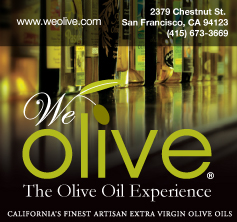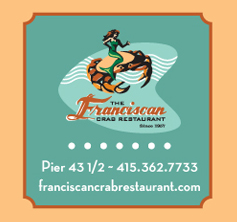I
am just going to come out and say it: there are rules on wine pairing, or rather, there should be. I know wine writers love to wax poetic about how you should drink what you want, rules be damned, but there are principles to follow when it comes to selecting wine, along the lines of no white shoes after Labor Day. By all means, go ahead and order a giant oaky California Cabernet or a powerful Australian Shiraz to drink with your fresh oysters on the half shell. But exactly how good do you think that would taste? I suppose if you like it and want to eat it, you can also ask for whipped cream and hot fudge to be poured over your cheeseburger, but there are reasons why these are not recommended combinations.
I am not espousing that we return to the rigid days of white-wine-with-fish and red-wine-with-meat (particularly because that rule makes no reference to the type of preparation or sauces involved). In fact, I am recommending the opposite. Be flexible. Diversity is a good thing, particularly when it comes to wine. Consider how the food and the wine go together instead of insisting on drinking only red wine or only drinking the same Chardonnay everywhere you go. Do not kill delicate flavors with heavy alcoholic wines.
Last winter, I splurged on a thick cashmere coat while visiting New York. As much as I love that coat, I know that it does not match every outfit I own. For example, I am not going to wear it with shorts and a tank top. (But if you are ever stumped for pairing, I will share a cheater tip I learned from a sommelier: go with Champagne or beer, which pairs with almost everything. These beverages are the denim of the wine world. They will not necessarily pair with every dish, but every wardrobe needs a staple.)
This brings me to the next wine rule. Trust the sommelier. People go to the dentist to treat cavities, stylists to cut hair, attorneys to handle legal problems, accountants to deal with taxes, and chefs to prepare food, but for some reason, they have an irrational fear of relying on the sommelier. The trick is to be honest about what you and your dining companions like. The more information you provide, the better the sommelier can help you. Sommeliers have no interest in selling you a wine you do not like or cannot afford. If you hold back for fear of looking stupid or cheap, that is where you will run into trouble. One of the first few times I dined at Zuni Café (and this was many, many visits ago, as I am completely addicted to the oysters, roast chicken, and the compact yet fabulous wine list), I decided to splurge on a pricey Chablis by Raveneau because I had heard so much about it but had never tasted it. I shared a glass with our server, who also shared it with the sommelier. A few minutes later the sommelier came by and whisked away our glasses and brought a replacement bottle. Apparently the bottle was corked ever so slightly; just enough to impact its lovely, nuanced multidimensional flavors, but not enough for the average diner (that is, my husband and me) to detect. It was not until we had the side-by-side comparison of the glasses from each bottle that the difference became noticeable. Now whenever I have the option, I prefer to have the sommelier taste the wine I order. I do not know why people have issues with sommeliers tasting first. Trust me, they have more than enough to drink without having to taste your wine for you.
Last but not least, please do not order your meat well done or even medium well for that matter. This has nothing to do with wine. I would just like it to be a rule because it pains me as much as watching someone drink Cabernet with oysters.
E-mail: jeannine@northsidesf.com
Oenophilic Tendencies
Wine Rules
Wine Rules








